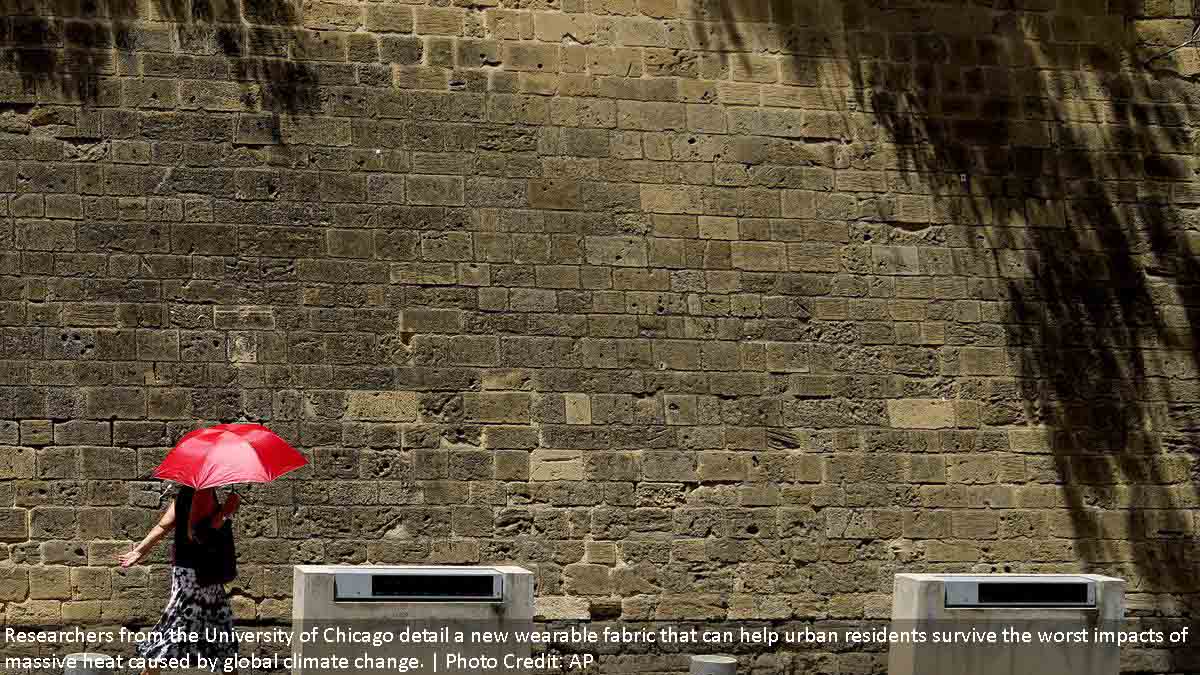
Category: FABRICS
Country: India
Region: Asia
By THE HINDU BUREAU
Updated - June 16, 2024 10:25 am IST
Published - June 16, 2024 06:00 am IST
As global temperatures and urban populations rise, the world’s cities have become “urban heat islands,” with tight-packed conditions and thermal radiation emitting from pavement and skyscrapers trapping and magnifying these temperatures. With 68 percent of all people predicted to live in cities by 2050, this is a growing, deadly problem.
In a paper published today in Science, researchers from the University of Chicago detail a new wearable fabric that can help urban residents survive the worst impacts of massive heat caused by global climate change, with applications in clothing, building and car design, and food storage.
In tests under the Arizona sun, the material kept 2.3 degrees Celsius cooler than the broadband emitter fabric used for outdoor endurance sports and 8.9 degrees Celsius cooler than the commercialized silk commonly used for shirts, dresses and other summer clothing. This, the team hopes, will help many avoid the heat-related hospitalisations and deaths seen in global population centers this year alone.
Existing cooling fabric for outdoor sports works by reflecting the sun’s light in a diffuse pattern so it does not blind onlookers. But in an urban heat island, the sun is only one source of heat. While the sun bakes from above, thermal radiation emitted from buildings and pavement blast city-dwellers with blistering heat from the sides and below. About 97% of the clothes are being heated by the thermal radiation coming at them from the sides and below, which broadband emitter fabric does not fight. This means many materials that perform well in lab tests will not help city-dwellers in Arizona,Southeast Asia and China when massive heat waves hit them.
The University of Chicago team’s new textile, which has received a provisional patent, can help provide a passive cooling system that can supplement and reduce the need for energy- and cost-intensive systems.
The applications go far beyond clothing. A thicker version of the fabric protected by an invisible layer of polyethylene could be used on the sides of buildings or cars, lowering internal temperatures and reducing the cost and carbon impact of air conditioning. Similarly, the material could be used to transport and store milk and other foods that would otherwise spoil in the heat, cutting refrigeration’s impact.
Courtesy: thehindu.com
Copyrights © 2025 GLOBAL TEXTILE SOURCE. All rights reserved.